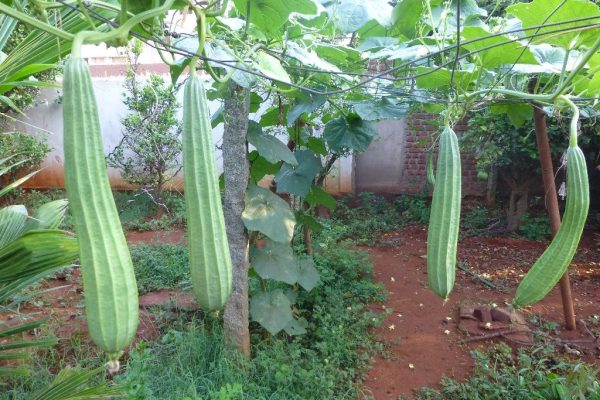Project Report For Luffa Farming
Introduction
Project Report for Luffa Farming is as follows.
Growing luffa plants and taking their fibrous, sponge-like fruit for use in a variety of ways is called luffa farming, also known as luffa or sponge gourd farming. luffa farming is the practice of growing the luffa plant, a member of the Cucurbitaceae family that also includes cucumbers, squash, and melons. The luffa plant is a vine that may grow up to 30 feet long and bears long, cylindric fruits that can develop to a maximum length of 3 feet. a great Luffa Farming
There are several climates where luffa can be cultivated, but warm, tropical settings are where it thrives. A lot of sunlight, water, and nutrient-rich soil is necessary for the plant to grow healthily. In order to encourage the plant to climb a trellis or other support structure, the seeds are planted in soil that drains well.
The fruit can be picked within 100 to 120 days of sowing because the plant develops swiftly. It is best to pick the fruit when it is still young and green because grown loofas become too fibrous to be useful for their intended uses.
Yellow flowers and a few little fruits should start to appear by June. By August, these will grow to be much larger green fruits; ours were approximately 20 centimetres long. The fruits start out green before becoming brown; this happens around mid-September. At this point, when they have dried out on the vine, is the ideal time to harvest them. Per plant, we harvested 4-6 fruits.
The luffa plant is a climbing vine that grows quickly and can get as long as 10 metres. Its Luffa is frequently referred to as a sponge gourd because of its elongated, cylindrical shape, spongy texture, and spongy feel. The fruit is a good source of minerals like calcium, iron, and potassium as well as vitamins A, C, and B. Because of these nutrients, luffa is a healthy food source and a well-liked addition to many traditional Indian cuisines.
Luffa has been employed for a number of functions throughout cultures for ages. The fruit is perfect for use as a natural scrubber because of its fibrous, sponge-like texture. The fruit can be used to exfoliate the skin and remove dead skin cells once it has been picked and dried, leaving the skin soft and smooth.
Luffa is used to make a variety of home products, including dish scrubbers, pot scrubbers, and bath sponges, in addition to being used as a natural scrubber. Additionally, paper and insulation can be made from the fibrous material

Get Completely Custom Bankable Project Report
Market Potential for Luffa Farming
The demand for luffa in India is increasing due to the growing awareness of natural and eco-friendly products. Luffa is a natural scrubber that is biodegradable and can replace plastic scrubbers, which are harmful to the environment. The increasing demand for luffa has made it a lucrative opportunity for farmers in India to start luffa farming.
During the forecast period, which runs from 2021 to 2030, the global market for luffa seeds is anticipated to expand at a CAGR of 5.5%.
The market potential of luffa farming in India is significant as the demand for luffa is expected to grow in the coming years. Luffa is a versatile product that can be used in various industries such as cosmetics, personal care, and home cleaning. The cosmetics industry is growing rapidly in India, and the demand for natural and eco-friendly products is also increasing. Luffa can be used as an ingredient in scrubs, exfoliating products, and soap.
The personal care industry is also growing in India, and the demand for natural and eco-friendly products is increasing. Luffa can be used as a scrubber for cleaning the skin, removing dead skin cells, and improving skin texture. The home cleaning industry is also growing in India, and the demand for natural and eco-friendly products is increasing. Luffa can be used as a scrubber for cleaning dishes, utensils, and other household items.

